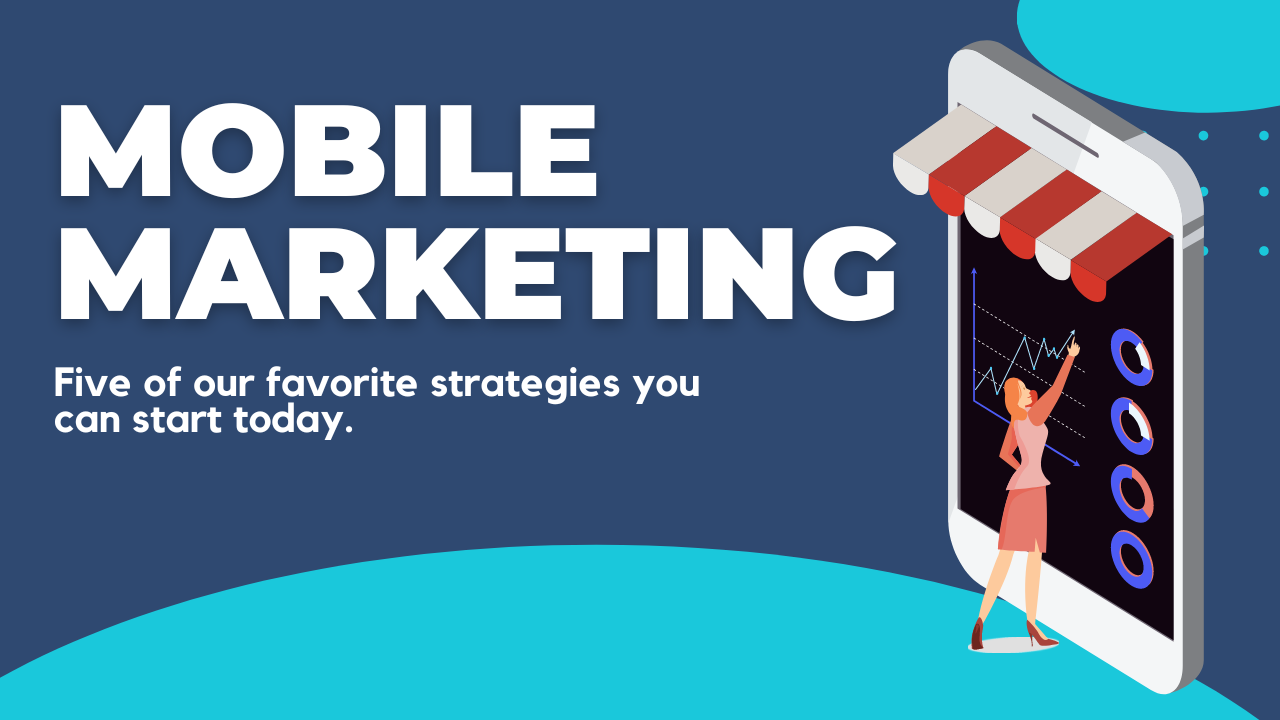Mobile Marketing for Your Small Business

Want to know how you can get into bed with your customers every night?
Or be by their side nearly every minute of the day?
It’s not as scandalous (or stalkerish) as it sounds.
We’re talking about two simple words: Mobile Marketing.
Mobile marketing is a powerful and effective way to reach customers where they are at any time and any place. Think about how often you’re on your own phone. You’re checking emails. You’re reading the news. You’re scrolling through Twitter or responding to texts or checking your bank balances, or playing Wordle. Point is, you’re on it a lot - and probably more than you realize. According to Zippia, the average American checks their phone approximately 96 times PER DAY. (That’s once every ten minutes.)
So yeah. Why wouldn’t you want to tap (into) that? Here are five of our favorite strategies to consider incorporating into your own business.
1. Develop a mobile-friendly website: What looks good and functions well on a laptop doesn’t necessarily translate to a small screen. Optimization is the name of the game, and you want to make sure your site has a responsive design that not only looks good but works well on smartphones.
2. Try SMS marketing: Text messages are simple, straightforward, and to the point…and they pop up on the consumer's screen instantly. Score! It’s also worth noting that SMS has a 19% click-through rate. For context, email comes in at 4%, and Facebook averages a paltry 1% CTR. Now, keep in mind that email and social media are still an important part of your marketing strategy; SMS texts are just another way to reach your target audience and reinforce your brand. Just make sure your messages are value-driven and limited to special offers, discounts, or other promos.
3. Develop a mobile app: There seems to be an app for everything these days, no? And there’s a reason for that; it allows a business to provide a customized experience for their customers that A) keeps them “in-house,” B) makes it easier to promote products and services, C) reinforces the brand, and D) improves customer engagement and loyalty. It might feel like an expensive or large undertaking, but when you consider how much time people spend on their mobile devices, it’s a bit of a no-brainer. (Not sure what your app needs? Check out this list of absolute must-haves to get started.)
4. Use location-based targeting: Many online advertising platforms - like Google Ads, Facebook, etc. - allow you to target your ads to specific locations. This is particularly useful if you have a physical storefront or your services are only available in certain areas. Or, if you are trying to expand into or open up in a new town or territory, the ability to target potential customers ahead of time can be a huge advantage.
You should also make sure your website includes your business’s NAP (name, address, phone number) and that this information is consistent across all of your online directories and listings; this will make it easier for people in your local area to find your business when they search for relevant keywords.
5. Create mobile-friendly social media content: Similar to making sure your website is optimized for mobile devices, the content you post to your social feeds should also get the same treatment. It’s important to be cognitive in how people read and digest information - especially on a small device.
Avoid long strings of text and instead group short pieces of information into “bite-sized nuggets” with ample white space in between - or use bullet points. Also, avoid posting poor-quality videos, scratchy audio, or images that aren’t the correct proportions for the feed. It’s sloppy and unprofessional, and there’s a good chance they won’t even bother to read or watch - no matter how dynamic the content is.



